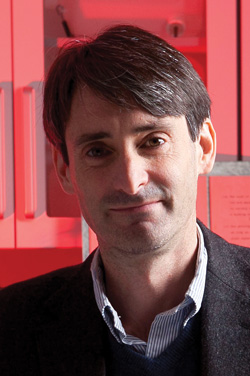Why Ireland should join CERN

 Senior physics lecturer at UCD Ronan McNulty explores the most significant potential benefits of CERN membership for Ireland in relation to research and networking.
Senior physics lecturer at UCD Ronan McNulty explores the most significant potential benefits of CERN membership for Ireland in relation to research and networking.
 CERN was established in 1954, in a Europe fragmented by the Second World War, under the banner of ‘Science for Peace’. CERN’s mission is to push back the frontiers of knowledge, develop new technologies, train the next generation and unite people from different cultures. All research is open and given freely for the betterment of humankind. It has become the premier scientific laboratory in the world: its research was awarded Nobel prizes in 1984, 1992 and 2013, and its benefits to humanity include PET scanners in hospitals, hadron therapy for cancer treatment, touchscreens and the World Wide Web.
CERN was established in 1954, in a Europe fragmented by the Second World War, under the banner of ‘Science for Peace’. CERN’s mission is to push back the frontiers of knowledge, develop new technologies, train the next generation and unite people from different cultures. All research is open and given freely for the betterment of humankind. It has become the premier scientific laboratory in the world: its research was awarded Nobel prizes in 1984, 1992 and 2013, and its benefits to humanity include PET scanners in hospitals, hadron therapy for cancer treatment, touchscreens and the World Wide Web.
Ireland is the only sizeable European country that, along with Moldova and Bosnia, is neither a member nor has a formal agreement with CERN (see Figure 1). In addition, India, Pakistan, Turkey, Ukraine are associate members, while Argentina, Australia, Canada, China, Iran, Korea, Mexico, Russia, Saudi Arabia, South Africa, USA, to name but a few, all have collaboration agreements. Ireland’s position appears anomalous, especially when considering the necessity of training a scientifically literate work-force, our dependence on a knowledge economy, and our reputation as a destination of choice for high-tech companies.
One benefit of membership is contracts for Irish companies. CERN gives contracts preferentially to member state companies. Currently, companies (including multinationals) making products in Ireland are at a competitive disadvantage compared to their competitors or their own subsidiaries in other countries. Irish companies with unique products have won CERN contracts in the past. At a recent Oireachtas meeting of the Business, Enterprise and Innovation committee, Ed Hendrick, CEO of Sonru gave powerful testimony on how his contract with CERN has had a significant impact in growing his company from 10 people in 2011, to 60 today. In particular, Switzerland is now one of his strongest markets. He attributed this to the sharing of information, credibility, advocacy and networking opportunities of CERN.
Knowledge transfer can be of even greater benefit. Working at the frontier of what is known and is technologically possible, inevitably leads to breakthroughs, and being part of that leads to opportunities, patents and competitive advantages. The companies that worked with CERN to make the most powerful magnets in the world for the Large Hadron Collider (LHC) are today market leaders in making magnets for MRI machines in hospitals. Vacuum engineers at CERN spun-off their know-how into a company making more efficient solar panels. Consider the opportunities available to someone present at the birth of the Web: in 1994, TCD student James Casey, courtesy of his UK passport, was a summer student at CERN working two doors down from Tim Berners-Lee. Today he works on cloud computing with Seattle-based start-up CHEF. Innovation is not spontaneous: it requires access to ideas and knowledge.
Both science and economies are global in scope. Withdrawing from international partnerships has negative impacts in terms of the long-term social, economic and environmental health of nations. Making connections and working together is vital for success. Such reasons motivated the creation of CERN but are no less relevant today. A 2014 OECD study on large research infrastructure commented on CERN’s role in “the revitalisation of central Europe following the end of the Cold War and… the development of an advanced, extremely sophisticated form of cancer therapy”. CERN is international by design and Ireland ought to be part of what has become a world-wide venture. With Brexit looming, closer ties to continental Europe are essential. CERN is a channel to foreign markets, international research, and external funding: CERN is associated to over €350 million of Horizon 2020 grants.
Specific economic sectors where Ireland would benefit are: microelectronics and sensors; medical devices and public health; and big data. Producing and exploiting detectors used at the LHC is an opportunity for Irish industry. The Tyndall Institute and SensL (now ON semiconductors) in Cork make radiation sensors and silicon photomultipliers for CERN, while an on-going project is testing ‘Medipix’ detectors and future LHC sensors for medical imaging at St Luke’s hospital in Dublin.

There are about 30 particle accelerators in Ireland; all are in hospitals treating cancer. Looking to the future, Ireland needs to become involved with an important emergent technology called ‘hadron therapy’ (essentially a mini-LHC), which CERN is in the vanguard of developing. New forms of cancer diagnosis and treatment are vital since there is a one-in-three chance of developing cancer at some point in our lives, and consequently, it is a major area for policy and investment in Ireland and Europe, including Horizon 2020 funding.
A Department of Business, Enterprise and Innovation commissioned report from 2015 commented: “The lack of Big Data skills could be the single most important barrier preventing Ireland achieve its goal of leadership in this market.” CERN has one of the largest data stores on the planet and takes data at a rate 1,000 times greater than the global mobile-phone data-traffic. Working with this provides instant training and new insights. Yandex, the Russian Google, saw this potential and is now a member of one of the LHC experiments. Ireland joining CERN would give computer scientists, technicians and engineers access to this data and the development of machine learning and data-mining tools.
Training for scientists and engineers is vital for the knowledge economy in Ireland. CERN is essentially a training academy as shown by the fact that the mode age of CERN users is 27. In addition to accommodating thousands of students doing Masters and PhDs, CERN has many formal training schemes: apprenticeships; training partnerships with universities; technical training experience; a graduate engineering training scheme; internships for computer scientists and engineers; the CERN summer student programme for undergraduates; and workshops for secondary-school teachers.
The DBEI Innovation 2020 strategy seeks to bring Ireland’s R&D intensity to 2.5 per cent of GNP by 2020 (in 2016 it was 1.5 per cent) by “increased investment in expanding Ireland’s participation in International Research Organisations, including CERN”. Investing in science is an important part of growing the economy and of building resilience to future economic shocks.





